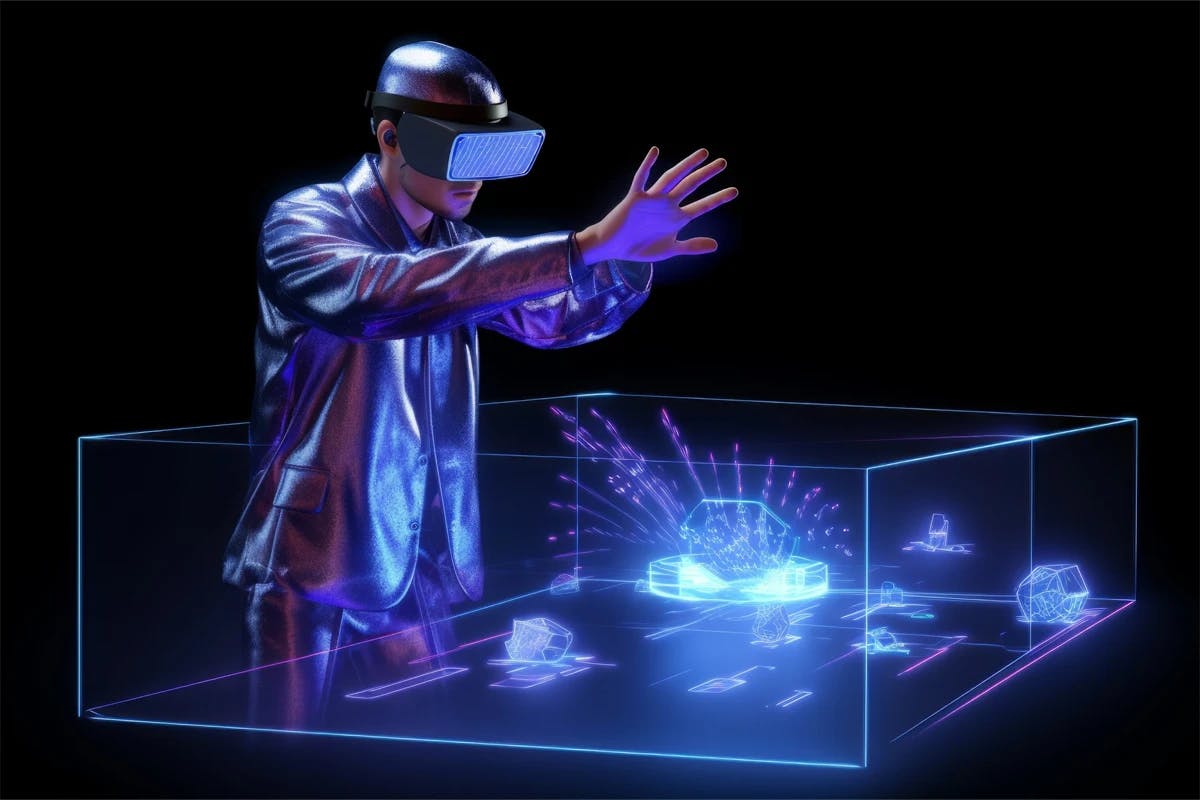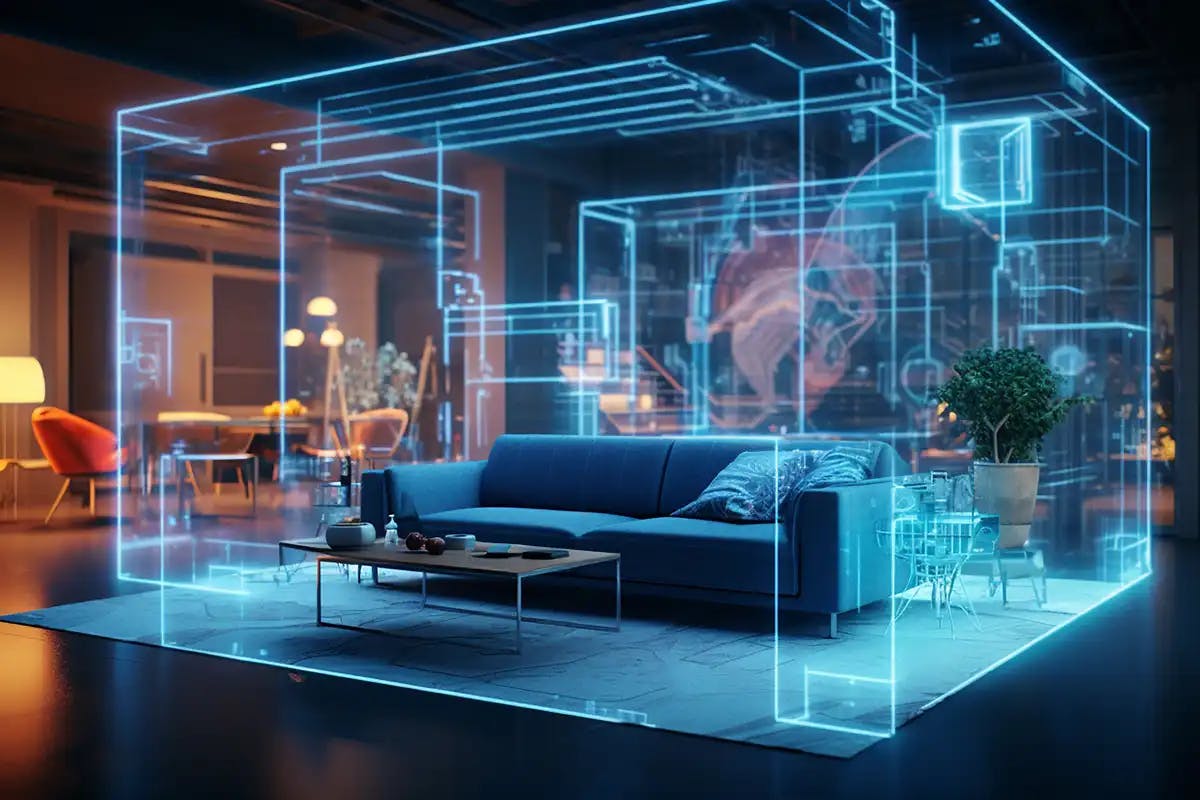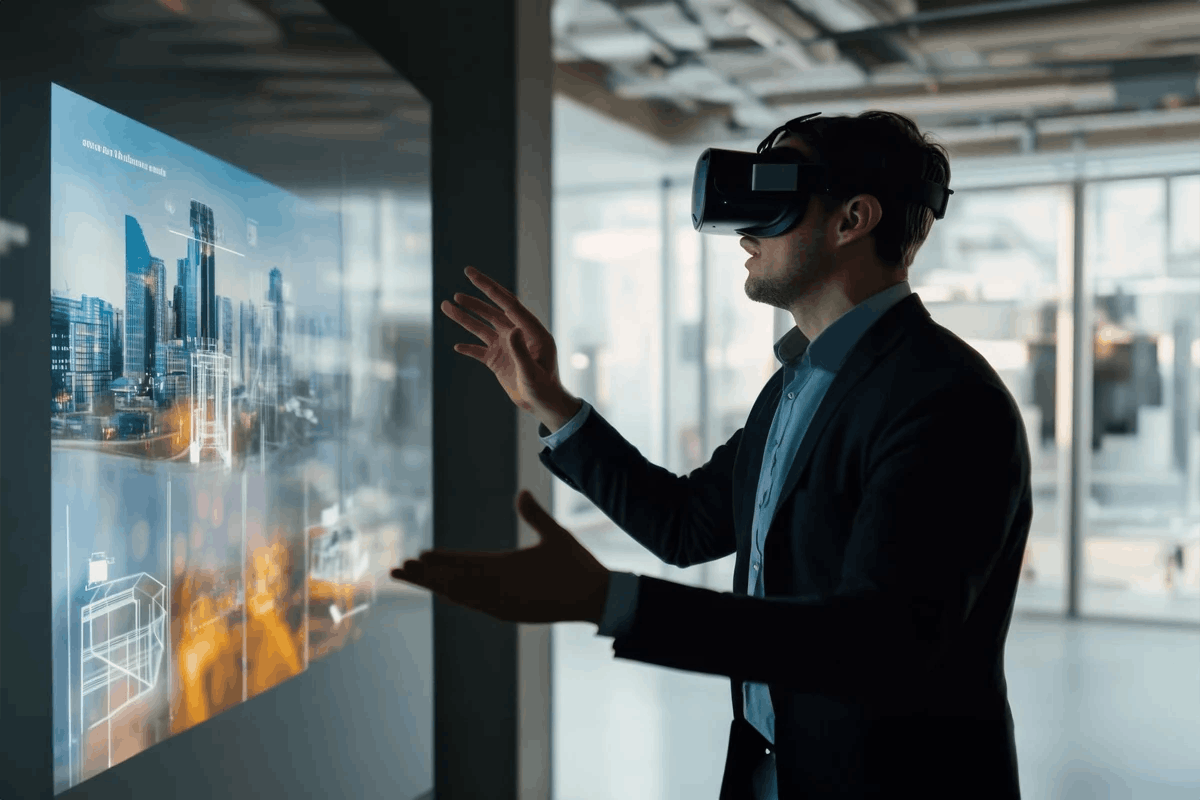
,
Everyone with an expectation to construct a residential or commercial building within the budget and schedule nowadays uses world-class resources and professional services. They like to use modern technologies, especially augmented reality associated with the interior design of the property.
A good augmented reality makes a digital depiction of reality and successfully imports the complete digital perspective into planning. It is useful to extend the interactive capabilities and personalise the interior design project.
What is Augmented Reality?
Augmented Reality (AR) is the successful integration of digital information in the environment of every user in real-time. Every user of AR experiences the real-world environment with generated perceptual details overlaid on top of it. They ensure that AR manages to combine the digital and 3D components with the real-world perception of an individual.
Qualified interior designers improve the visual presentation of the complete design projects for every client. This is because they efficiently use augmented reality. An immersive interior is an advanced interior design method and is useful to transform the usual environments into the best pieces of living art. The main purpose of immersive interiors is to establish an emotional bond between your living areas and everyone in your family.
You can use the augmented reality and immersive interior in your augmented reality room project for the best result.
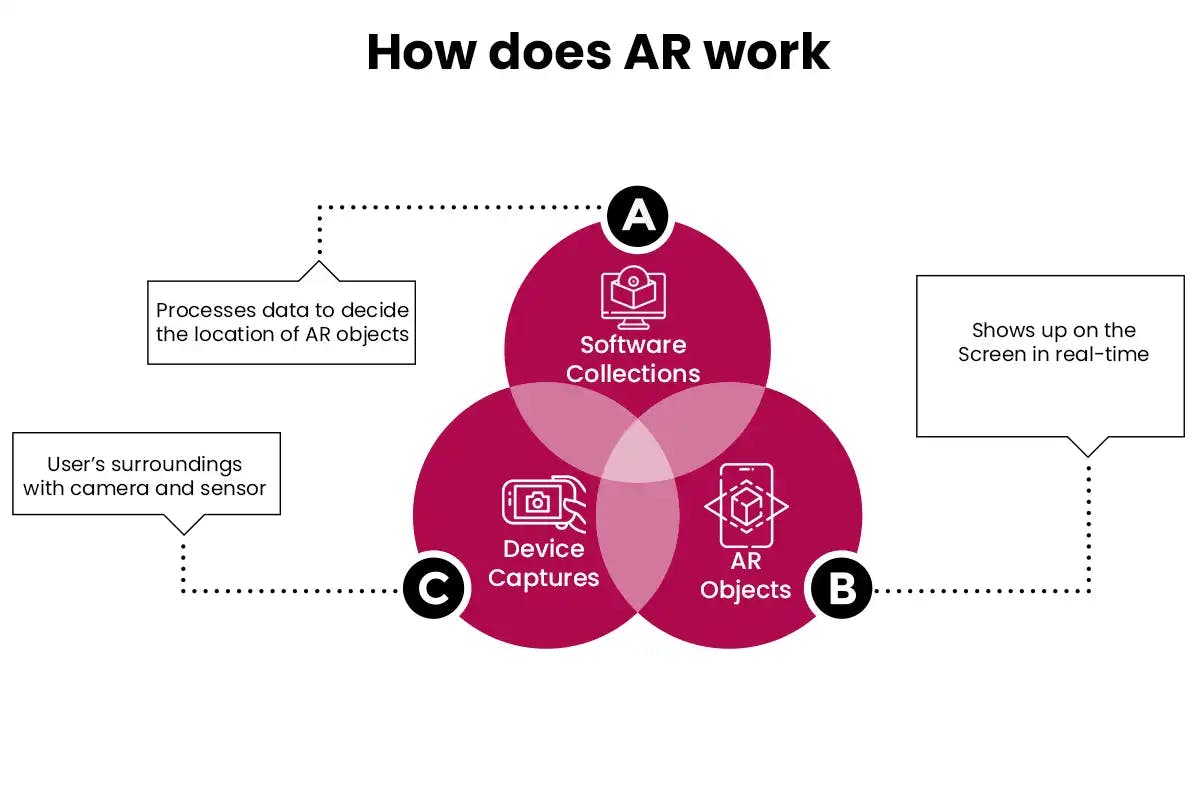
Underlying Technology Powering AR Room Experiences
Augmented Reality (AR) technology combines virtual information with the real world. All beginners in the augmented reality dressing room like to know about the technologies behind it and make a good decision to efficiently use it.
How Augmented Reality Works AR Room?
Augmented reality technology is an advanced technology designed to add layers of the best digital content to the world we look at with our eyes. You need dedicated eyewear to view this improved reality and interact with the augmented reality escape room. You can also use a screen on your computer, tablet, or phone to view it. The camera of this device makes the base layer of reality.
The augmented reality software generates the overlay of images, text, labels, or three-dimensional models. There is a requirement to use extra sensors and data connection to blend the two worlds and trick viewers’ minds into believing the illusion.
Functioning of AR software and AR Hardware
The software plays a leading role in the most efficient functioning of AR devices. Experts in AR in interior design projects nowadays use special 3D programs and create AR-based applications and projects like augmented reality fitting rooms. First-class 3D software is used to develop the virtual images for overlapping the real word image. Some examples of this software are the Cinema 4D, AutoCad3D, and StudioMax.
The main components of AR hardware items are sensors, displays, input devices, and processors. There are mini supercomputers used in the AR and packed into small wearable devices. They include the CPU, Wi-Fi, GPU, GPS, RAM, flash memory, and others.
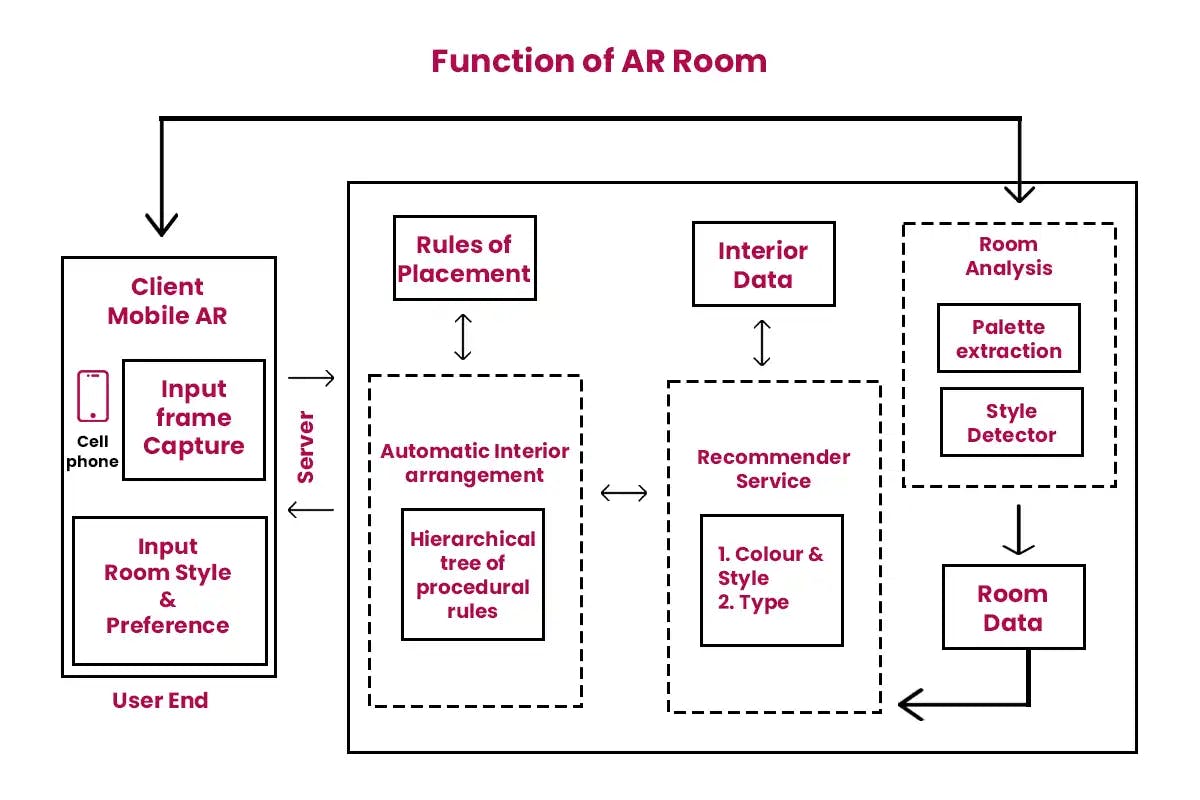
Role of 3D scanning in Augmented Reality
Augmented reality technology superimposes the computer-generated image on the viewer’s view of the real world and provides a composite view. An advanced in-browser augmented reality experience changes the landscape of how e-trailers successfully present their products online. You can 3D scan and properly digitise your assets for efficient use in AR interactions, product visualisation, and 360-degree product views or tours in real-world settings.
Reshaping Interior Design Dynamics With AR Room Concept
If you are an individual or family deciding to build your dream house within the budget and schedule, then you can explore augmented reality in interior designing and the latest augmented reality room design app.
AR is notably transforming the interior design service sector. Many interior designers and their clients have different problems in visualising the actual interior design project. They can use AR and overcome all these problems. interior designers can use this innovative solution and get the desired benefits. They research augmented reality use cases and make informed decisions.
Top Augmented Reality Use Cases for Interior Design
Augmented Reality for Interior Design
Every user of the augmented reality room planner uses their mobile device for overlaying the real world with all important virtual elements. This app lets the users see furniture items and get the wall paint that looks real.
A well-known furniture provider IKEA uses a catalogue application to let its users scan and choose the image from a printed catalogue and access the extended rich content on the go. This application also lets the user place all products available and explore the space in 360 degrees.
Customising Virtual Spaces
The pioneering augmented reality technology successfully makes interior design and virtual space-related projects very successful. Pokémon Go efficiently uses augmented reality technology. Augmented Reality is computer-generated content and properly overlaid on the real-world environment. You can experience this technology in the escape room Conway AR project.
Different industries like farming, real estate, education, healthcare, and broadcasting reap benefits from AR technology. The best-in-class AR plays with the available environment and also overlays the features on it. Almost every new-age customer expects a customised solution as per their needs. AR in interior design is a good option for these customers. There are different use cases for augmented reality at this time. You can focus on these things and improve your AR-based project.
Practical Applications in Real homes
Interior designers use AR to create virtual versions of their designs and let clients view and interact with them in realistic ways. They use the augmented reality room design app to make 3D models of rooms and buildings and visualise their designs in real-time. Interior designers let their clients interact with the virtual models and provide feedback on the design. They use AR in their interior design projects to experiment with different layouts, colors, and styles without any physical prototype.
Top Augmented Reality Room Application
The 3D Room Designer
The flagship product of Marxent is the 3D Room Designer. This cloud-based platform lets interior designers make interactive and three-dimensional room designs. This modern technology lets clients and interior designers visualise everything in different configurations and colors. This is because of augmented reality room scanning facilities.
The 3D Room Designer is a user-friendly and drag-and-drop interface. It is a library of customizable templates. Real-time rendering allows every customer to see every change to the design in real time.
Houzz
Houzz is a leading online platform designed for home design and renovation. It connects homeowners with contractors, designers, and architects. You can explore advanced aspects of the room scan augmented reality and make a good decision to use it. Houzz offers a mobile app ‘View in My Room 3D’ with AR to let its users visualise the decoration and furniture.
The View in My Room 3D is an outstanding AR feature. It lets users take a photo of each room and uses augmented reality to place the best virtual furniture and attractive decorations in the space.
The main things used in this technology are ARKit from Apple and ARCore from Google to anchor the overall virtual items to the real world. You can research the complex aspects of the use case augmented reality and clarify your doubts before using AR in your interior design project.
The Mastery of Immersive Experiences
There are different resources and technologies designed for creating engaging virtual environments and providing outstanding benefits to commercial and retail spaces. You can use the best services for experiencing augmented reality rooms in the real world, especially using the AR room scan option.
Creating Engaging Virtual Reality Environments
Creating an engaging and comfortable environment is very important for a very successful virtual event. You can consider the basics of the escape room in Bentonville ar and make your wishes about 100% satisfaction to your clients come true. The main objective of making an effective virtual environment is to make it very engaging for every attendee. The following details explain ways to make any virtual environment engaging for every visitor.
- Invest in reliable and advanced technology
- Seek qualified speakers and presenters
- Schedule an appointment for your hybrid or virtual event
- Create a safe and comfortable environment
- Decide on pre-recorded and live webinars
- Prepare for technical difficulties
- Leverage very interesting and relevant content
- Ask all attendees to give feedback
Benefits of AR in Retail and Commercial Spaces
There are so many benefits of using augmented reality in the retail and e-commerce sectors. Smart business people nowadays invest in AR application development services and make good decisions to make their business successful.
- AR is very useful to increase conversion and sales. Business people use AR and increase sales.
- The best-in-class AR drives sales of every product.
- AR-based applications assist their users in making informed decisions associated with shopping for products, especially furniture items.
For example, you can use AR technology to decide on whether specific furniture fits into the room or not, and an iPhone AR room scan option to check the room in detail.
Benefits of Augmented Reality in Retail and E-commerce Sectors
- AR decreases the rate of product returns
- Augmented Reality supports the sale of less popular and expensive products
- It helps to attract new and targeted clients
- AR helps customers remember the brand and return to shopping
- Augmented Reality enhances the employees’ efficient
Experiencing AR rooms in Real World
Top hotels worldwide nowadays use augmented reality and its associated technologies. Starwood Hotels uses the beacon technology for communicating with guests and sending virtual keys to unlock each room using the phones and tell the guests the location of the gym and provides access at particular times and days using the phones.
Holiday Inn uses AR to let its guests point their mobile phones to see virtual depictions of almost every renowned celebrity in the hotel and gives a fun interactive experience. Premier Inn uses AR and provides rooms with maps to let guests point their mobile phones at them and give information about the nearest points of attraction.
Challenges and limitations of Augmented Reality in Interior Design
- Technical Challenges
Beginners in augmented reality decide to know about the technical challenges associated with AR implementation. AR needs the most complex hardware and software systems to achieve successful results. For example, they need powerful cameras, sensors, processors, displays, and networks to give the optimal user experience. - Limited Interactions
AR offers less interactivity than virtual reality (VR) because of the real-world objects and environments rather than making simulated ones from scratch. Different solutions exist for enhancing the visuals and audio quality in augmented reality environments. - Occlusion Issues
Occlusion is the major problem associated with AR application development. It is blocking one object by another within an environment. This makes computer difficult to find and track objects accurately in real-time. - Privacy and Security Concerns
Privacy and security concerns associated with AR technologies are increasing as many businesses start using these technologies. Often businesses have to collect data from their users and let features like voice recognition and facial recognition be built within applications. Hackers use the same methods for nefarious purposes especially when the best safeguards are not put into place.
Future of Augmented Reality Rooms
Innovative technologies worldwide transform science fiction into reality.
For example, Holograms in the Marvel and Star Wars movies ensure that AR is in the real world and surrounds us. AR is used together with other metaverse technologies.
The metaverse is used in business development as it strikes down the barriers between the physical and digital worlds. AR displays the virtual objects embedded in the real world and supports interior designers to arrange the 3D tours on time.
The main examples of this AR trend are spatial audio, avatars, and taking digital items into the real world.
AR meets Artificial Intelligence in Two Ways
AR and AI solutions work well together and give innovative solutions and immersive experiences. AI powers facial and spatial recognition tools required for the AR to function. AI is used to make AR work very well.
Clip Drop app lets users digitise an item in the real world into a three-dimensional object and this object can be used in programs like Google Docs, Photoshop, and PowerPoint.
SketchAR app is a good example of an automatic design created by combining AR and AI.
Mobile Augmented Reality (AR)
Geospatial API is a new API from Google for creating experiences tied to particular locations in space. It lets developers set latitude and longitude coordinates for the AR content.
WebAR is powered by web browsers. It does not require any user to download extra software. It offers basic AR experiences and gives simple experiences especially changing the colour of objects and adding filters to faces.
Conclusion
Experienced interior designers worldwide use augmented reality and its associated technologies as they understand the evolving landscape of augmented reality rooms. They use this technology to provide customizable spaces and enhance the use of available space.
Advanced and smart technological innovations enable ubiquitous computing, machine learning, big data collection, and autonomous decision-making to come true in the immersive interiors of a digital future. Proper integration of AI and architectural design helps designers create the best images and helps users inspire potential interventions.
Codiste, being a Top AR VR development company, is dedicated to developing the best-in-class augmented reality room using their expertise to develop AR development with mixed reality. You can choose the Codiste to efficiently use AR in interior design projects because of the customised development, seamless deployment and integration, combination of multiple realities, immersive user experience, robust and scalable platforms, and streamlined development process. Contact us now!


